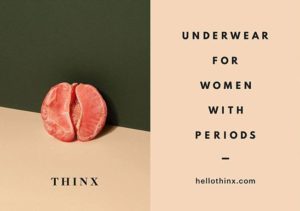The growing presence of female empowerment in advertising campaigns has sparked conversations around feminism on a larger scale. We love campaigns like Dove’s “Real Beauty” because of how inclusive it is. It showcases people of color in all different body types, making their message inclusive to those groups while also reaching a mass audience. But the motive to those campaigns and who they benefit most should be questioned. Several brands have used feminist themes in their advertisements, but have used different methods to do so. Some of them exploit the insecurities of women in order to profit, while others make an altruistic attempt at making a social change. So how can feminism be used as an acceptable marketing tactic?
It’s difficult to tell whether a company is truly sincere in their feminist endeavors, or if they are simply trying to market their products to the new demographic of fourth wave feminists. How committed to feminism are these brands? Beauty companies like create campaigns that have little to do with the products they sell, like Pantene’s “Sorry Not Sorry” video. There’s no connection to the brand itself and the video, but it sends the message that women are more inclined to apologize even when it’s unnecessary to do so. While this is accurate and creates a discussion revolving the issue, it doesn’t actually address the root of the problem. Dove’s “Real Beauty” campaign created a video in which showed how women have low esteem. But the way they present the issue makes it seems as though women have created the problem themselves instead of the standards and norms set by the media. The one exception to this is Dove’s 2006 “Evolution” video, which pointed out the heavy use of photoshop that creates a distorted ideal of beauty. Brands like Dove and Pantene spark important conversations, but they stray away from admitting that they have contributed to the problem women face as well.

Some argue that the sincerity of brands is not as important as the overall message it sends. These ads open up a conversation for people to actually think about how society affects women’s perception of beauty and strength. It’s true that more and more people are warming up to feminism because of the exposure showed through media. But we cannot herald Dove as being revolutionary when their parent company, Unilever, owns other brands such as Fair and Lovely and Axe that have produced sexist ads. Fair and Lovely markets bleaching cream to young women throughout Asia, creating the perception that fairer skin is beautiful. Axe objectifies women and promulgates the idea that women exist solely to please men. We must acknowledge that despite their feminist-themed videos, brands like Dove are affiliated with a larger power that has negatively impacted women on a global scale.
However, there are companies that have run campaigns that market products with a feminist theme and follow a set of ethics. Aerie, for example, stopped photoshopping models. As a result, sales went up and the company received much praise from consumers because of the realistic standards they present. There are also smaller companies such as Thinx and Milk Makeup that produce campaigns supporting feminism whilst selling products that follow that same ideology. Thinx and Milk Makeup distinguish themselves by including gender nonconforming people in their message. This appeals to fourth wave feminists since inclusivity is a part of they stand for. These companies are not as well known and do not distribute products worldwide, but their impact is visible through social media.

Those specific campaigns have helped reduce the stigma of issues regarding body image, periods, and beauty without an ulterior motive. There’s transparency within those smaller brands because they aren’t affiliated with other brands that contradict their message. We need to move towards creating and marketing products truly empower women instead of creating campaigns that exploit the feminist movement for sales. Reaching a more diverse demographic by having more representation in advertisements is something all businesses should follow, but they shouldn’t market products that contradict what they promote.
Consumers need to become more aware of the companies they buy items from and question their ethics. Maybe it’s not that important for some, but feminists especially need to take into consideration how a brand has affected women in the past. We shouldn’t completely condemn the campaigns that they have released. We need to continue having conversations about women’s self-worth and how society has affected them. But we should demand more from such companies to keep in line with what they advocate for. Marketing female empowerment has spread feminist themes further than before, but that doesn’t mean we should ignore the intentions of brands. We cannot let companies exploit feminism in order to make sales and broaden their demographic while they continue to contribute to the problem at hand. So become more informed of the brands you buy from, and try to buy from brands that are more hidden but actually make an earnest effort to contribute to the feminist movement.
Works Cited
Plank, Elizabeth. “10 Worst Ways Companies Have Used Feminism to Sell Women Products.” Mic. Mic Network Inc., 26 Oct. 2015. Web. 16 Jan. 2017.
Gay, Roxane. “Introduction.” Bad Feminist. New York: Harper Perennial, 2014. Xvi. Print.
Wollstonecraft, Mary. The Essential Feminist Reader. N.p.: n.p., n.d. 286. Print.